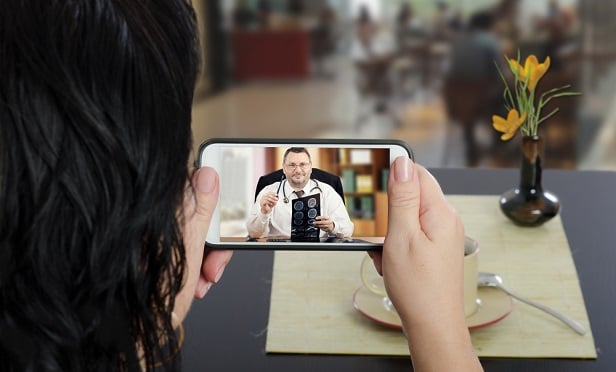 Telehealth providers could boost business in rural areas by raising awareness of quality care available through the service. (Photo: Shutterstock)
Telehealth providers could boost business in rural areas by raising awareness of quality care available through the service. (Photo: Shutterstock)
While telehealth has only been used by 10 percent of health care consumers, it has the highest customer satisfaction level with users of any consumer category studied by J.D. Power. And although current use is sparse, it's expected that wider adoption will grow "considerably considerably as health care consumers continue to use and recommend the service."
So says the J.D. Power 2019 U.S. Telehealth Satisfaction Study, which finds not only that satisfaction levels are high but positive word of mouth is expected to drive broader adoption. People who use it really like it; the study reports that telehealth's overall customer satisfaction score is 851 out of 1,000, and is 900 or higher among 46 percent of users.
Related: Why more employees are embracing telemedicine
Not only are these scores high, they're "among the highest of all health care, insurance and financial services industry studies conducted by J.D. Power"—outpaced only by direct banking customer satisfaction, with an average score of 855.
The study ranked customer satisfaction with telehealth services based on four factors, in order of importance: customer service (45 percent); consultation (28 percent); enrollment (19 percent); and billing and payment (9 percent).
While people are happy with their experience, providers have a tough time with those who don't know if telehealth available to them through their health provider or system (37 percent) or those who simply don't have access (29 percent).
Rural areas are the toughest to crack, with only 25 percent self-reporting its availability. According to the report, this is one area in which telehealth providers could boost business by raising awareness of quality care available through the service.
Regarding the service itself, the study found that it worked for most users, with more than 84 percent saying that they could completely resolve their medical concern during their visit, with 73 percent saying they had no issues or problems during the service. In addition, 49 percent say there were no barriers to make the process difficult and 87 percent characterized the enrollment process as somewhat/very easy.
Timing for telehealth visits averages out at 44 minutes, which doesn't please users very much—17 minutes to enroll, 9 minutes waiting for the practitioner and 18 minutes for the actual consultation—but providers "compensate for it with the quality and convenience of care provided."
Read more:
© 2025 ALM Global, LLC, All Rights Reserved. Request academic re-use from www.copyright.com. All other uses, submit a request to [email protected]. For more information visit Asset & Logo Licensing.







